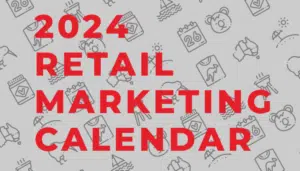Expanded text Ads are comparable to the text ads you are accustomed to, with a few important modifications. There are three headline fields in ETAs. The first two fields are mandatory, while the third is optional (1). The supplementary headline box allows you to add more content to your advertisements. Each headline is limited to 30 characters maximum.
The headlines will be shown beside one another, separated by a vertical pipe. Depending on the size of the screen of your potential consumer, they may wrap onto a second line (1). On large mobile screens, the third headline may display more often.
After June 2022, they will no longer be available despite their appeal. Google has indicated that search behaviour is continually evolving. In fact, 15% of daily search inquiries are brand-new questions that Google has never seen before (1).
By utilising Responsive Search Ads, Google intends to employ automation to keep pace with these changes. These blend one’s creativity with the power of Google’s machine learning to assist businesses in displaying more relevant advertisements to a greater number of people.
Google has also revealed that marketers that transition from expanded text ads to responsive search ads using the same assets experience an average of seven percent higher conversions at the same cost per conversion (1).
Beginning 30 June 2022, only responsive search ads will be able to be produced or updated within regular Search campaigns. This modification will facilitate the creation of Search ads by marketers and make it easier for them to drive performance using the automated tools.
What is the situation of expanded text ads?
You will no longer be able to create or amend expanded text ads after 30 June 2022. However, your existing extended text ads will continue to appear alongside responsive search ads, and you will continue to get performance data for them in the future. In addition, you will be able to pause and continue enlarged text adverts, as well as erase them if necessary. Additionally, you will continue to be able to create and change call ads and Dynamic Search Ads.
Insil has produced the following advice to help you maintain your current Google Ads efforts before the change is introduced.
You may utilise Expanded Text Ads (ETAs) data to create Responsive Search Ads (RSAs). Google’s current recommendation is to have at least one responsive search advertisement in each ad group of your Search campaigns by June 30, 2022.
Combining broad match keywords and Smart Bidding with responsive search advertisements is a winning combination. This combination will enable you to target fresh, high-performing inquiries and optimise your bids in real time. Using the same assets, advertisers that transition from expanded text ads to responsive search ads with broad match and Smart Bidding experience an average of 20 percent higher conversions at the same cost per conversion.
Determine the most effective combinations of message titles, descriptions, and combinations for ETAs.
Create scripted ETAs for use in the future. Current expanded text ads will continue to run and can be switched on and off as needed.
Prioritise ad performance by reusing effective content from expanded text ads.
In your responsive search advertising, assign headlines or descriptions to certain spots. This guideline should only be followed if particular areas in your advertisement demand text. As a consequence of our testing, we’ve determined that directing the machine to pin certain text in particular locations frequently produces undesirable results.
Consider incremental impressions, clicks, and conversions when measuring the effectiveness of your ad groups and campaigns.
Summary
You’ll be able to evaluate the success of each ad unit, but because responsive search ads employ dynamic headlines and descriptions, you won’t be able to confidently determine which headline and description combinations contributed to the performance.
Regardless of how you feel about the change, you must use the remaining time to ensure that your account is in the best form possible before the deadline. Whether you prioritise ETAs or RSAs depends on the current state of your account.
Avoid the temptation to maintain excessive control by locking components in all areas or limiting dynamic learning, but just don’t accept Google’s “best practices” as the greatest answer for your account. Utilise this time for testing, learning, and iteration, and you will be ahead of the competition once the rollout is complete.
References:
Bent, S. (2022). Making it easier to show the right message on Search – Google Ads Help. Retrieved 9 May 2022, from https://support.google.com/google-ads/answer/11031467




